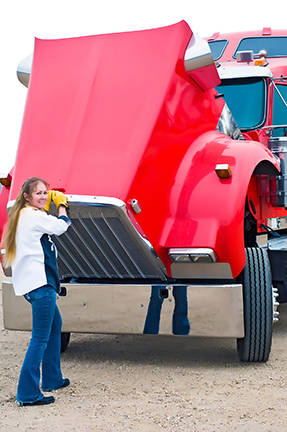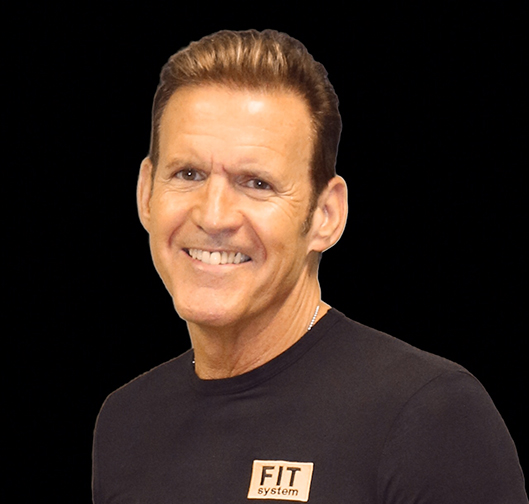First, I want to thank all the drivers who reached out to me to say how much they enjoyed the article titled “Truckers can get on the road to healthy lifestyles with slight adjustments” that ran earlier this year in The Trucker. I’m pleased to hear so many of you found the information useful as a way to work out every day.
A question I am commonly asked is about strengthening one’s stabilizer muscles. Truck drivers can compare stabilizer muscles to their truck’s stabilizer bars. Let’s look at the comparison.
The muscles of the body act to stabilize a joint so that a particular movement can be performed at another joint. These “stabilizing” muscles usually aren’t directly involved in the movement; instead, they provide support and keep you steady so that the primary muscles can do their job. For example, if you are doing a chest press on an exercise ball, the primary muscles working include the ones in your chest and arms, but the muscles in your abs, back and legs work isometrically to stabilize your body.
Stabilizer bars in a truck distribute weight evenly and improve the vehicle’s movement and cornering traction. Starting to see the comparison?
As a fitness professional I have heard debates about whether it’s necessary to concentrate on strengthening stabilizer muscles or if free-weight training provides all the necessary benefits in strengthening the stabilizer muscles. For example, when walking up steps, your body is working by using your legs to move you upward with force to the next step. If you are focusing on keeping your shoulders back and your abs tight, logic would say, “I’m using my quads and at the same time strengthening my stabilizer muscles” By the definition above, your stabilizer muscles are supporting the movement while not necessarily conducting the movement.
In my opinion, if you are practicing good techniques and, as in the example of walking up steps, keeping your abs and back engaged in the movement, you are, in fact, strengthening those stabilizer muscles. In the example of performing the bench press on the ball as your abs, back and legs keep your body stable, the same principle could be applied to pressing a barbell overhead. Those same three body parts are involved to keep your body balanced.
The message here is this: If you are going to take the time to exercise, make the effort to use all the resources you have to reach the full benefit of exercising.
Another example is when you are preparing to pull your fifth-wheel pin, lower your landing gear, or pull your hood up. The next time you perform any of these actions, think about the movement first. Most drivers do not engage supporting muscle to perform these movements, which means that over time you could be causing small muscle tears. If a muscle is unable to adequately respond to or meet the demands of a task, it can become overloaded and tear under strain. This happens when we perform quick movements without allowing those muscle time to recruit other supporting muscles to help. Using these stabilizing muscles can be viewed as another set of hands, so to speak.
Before you pull the hood next time, make sure first that your shoulders are warmed up. Second, make sure your abdominal muscles are contracted and ready to help out with the task at hand. Third, use your legs.
Also, you should always make sure to take necessary measures to prevent injury. Be sure to warm up your muscles before performing any exercise movement, especially those that involve your shoulder or rotator cuff.
Here’s a quick rotator-cuff warm-up:
Start by holding an exercise band or even a bottle of water in one hand. Hold your arm at a 90-degree angle, making sure the elbow touches on your side at all times. Slowly rotate your arm outward (while keeping your elbow at your side); then, move your arm back across your stomach. Repeat for 10 reps and then change arms. Once you can perform a set of 20 reps without strain, move up to two sets.
Bob Perry is a regular contributor to The Trucker. He has spent nearly the past four decades on a mission to educate professional drivers and share life-changing products and services to help them live healthier lives while on the road. Recognized throughout the transportation industry, from bus drivers to over-the-road professional drivers, Perry has played an important role in creating a paradigm shift helping regulatory agencies, private and public sector entities, and consumers understand the current health challenges of the professional driver. He has participated as a wellness advocate in several roundtable discussions, large audience groups and small forums as well as going “curbside” through a national truck stop tour.
Bob’s articles have been featured in The Trucker and a number of other national transportation industry publications and is the host of a weekly wellness call produced by Rolling Strong. Bob has been a regular guest on RedEye Radio and Land-Line Radio, and is often an invited guest on Sirius radio shows. He has been featured in the New York Times, Men’s Health Magazine, Drug Store News, American Road Magazine, WSJ, NPR, ABC National Radio, as well as hundreds of daily newspapers. He has appeared on television news shows across the nation, including a featured TV segment on ABC NightLine News.





